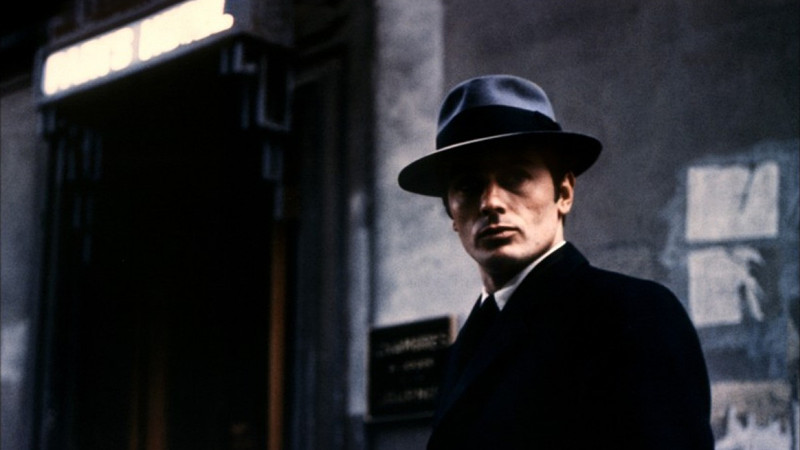
During the period of German occupation that went from 1940 to 1944, French cinema took various shapes and paths – from the sophisticated historical films of Claude Autant-Lara (for instance, 1943’s production of “Douce”), to anti-war drama films (which has its best examples in later works from the 1950s such as 1952’s “Jeux Interdits” or 1956’s “Gervaise”) or the highly praised and original works from influential directors such as Jean Cocteau (1946’s “Beauty and the Beast”), Robert Bresson (1943’s “Angels of Sin”), Jacques Becker (1943’s “It Happened at the Inn”) or Julien Duvivier (1937’s “Pépé Le Moko”) – French cinema manifested many interests and themes.
However, influenced by a pessimistic vision over reality brought by the war and its atrocities or perhaps influenced by the noir influences coming from the other side of the Atlantic, French cinema welcomed from the early 1940s and most notably in the later 1950s a new wave of gangster/thriller films that are often referred as the French branch of Film Noir.
These films were in many aspects influenced by the hard boil American style, presenting a certain closeness to the anti-hero figure and a feeling of disenchantment and at times contempt for society. However, it’s interesting to observe that the “French noirs” place more emphasis on the disposition of a given ‘criminal organization’. Using the values that regulate it – power, money, greed, cruelty, fear and so on – to mimic the ‘outside’ society, that is, the society in which we all live, regulated by finance, law and order and so on.
Another interesting aspect that French noirs highlight is the importance of the female figure – femme fatale – as a centre or motor for the action. In addition to this, visually speaking, naturally this French crime wave shares many aspects with the American noir, however the most sticking of them all which was (perhaps proportioned because the golden age of French Noir coincided with the standardize use of colour that came with the 1950s) the combining of chiaroscuro techniques with colour. Which to a certain extent is a key element to understand and praise the importance of French noir films. Despite the fact that even today, many of these influential films were also made in black and white.
This list incorporates a number of films from an early period prior to the German occupation of France, productions from the 1930s and later on it includes titles produced during the occupation period (1940 – 1944), titles from the golden age of “French Noir” (1950s) and neo-noir titles from the 1960s, titles which can be tied to this noir wave despite the fact that these later films incorporate more elements of gangster films and other genres.
Early Noir influences
1. Pépé Le Moko (1937)
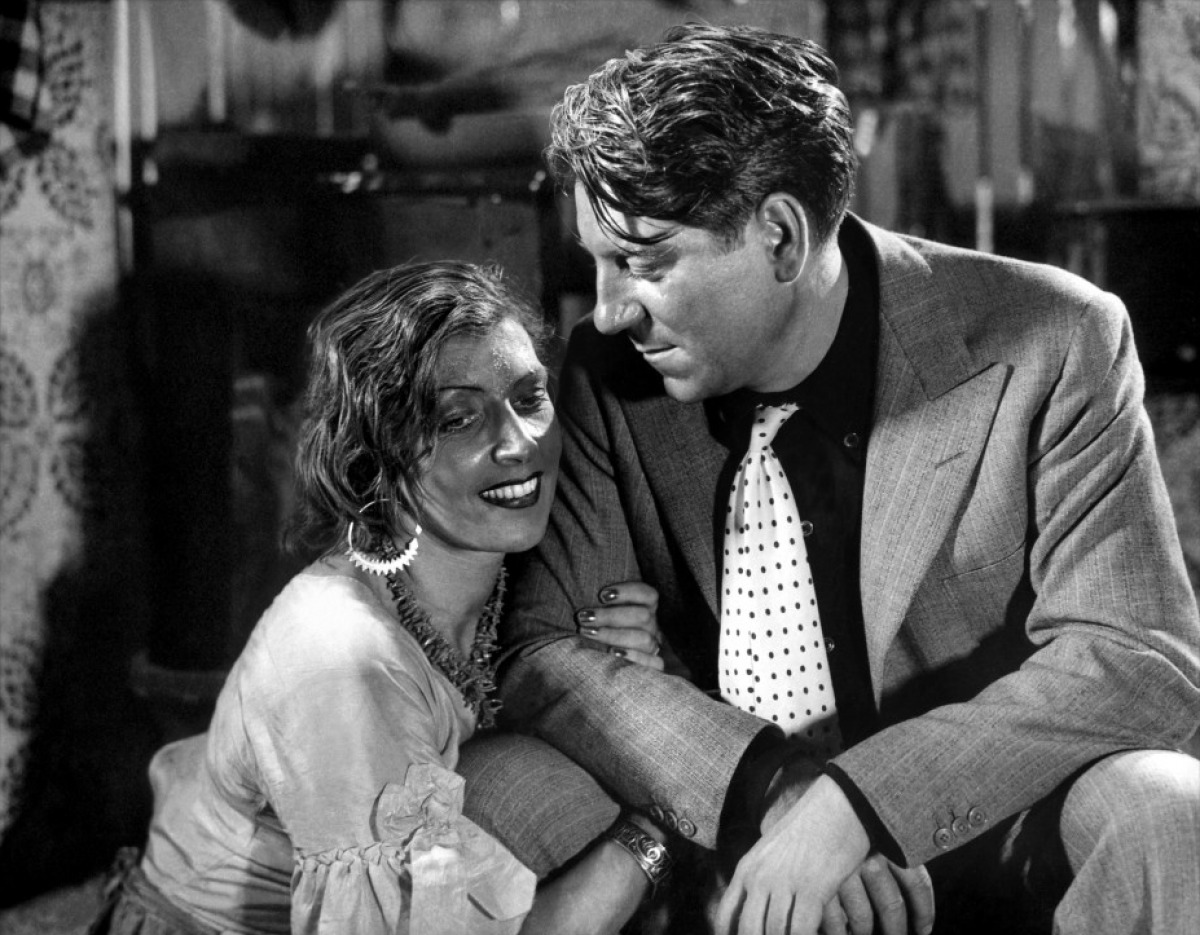
Julien Duvivier was undoubtedly one of the most important film directors when it comes to classic French cinema. Duvivier, who had been an actor in an early stage of his artistic career, reached stability and a name for himself during the 1920s and had successfully directed prior to Pépé Le Moko, Poil de carotte in 1932 and La Belle Équipe in 1936.
Pépé Le Moko is centred on Jean Gabin’s character, a gangster by the name of Pépé, who is wanted by the French police reason why is fled from France to Casbah, Algeria. However, a police inspector found Pépé’s hiding and when he learns that the gangster has fallen in love with a woman name Gaby, he sees in her a mean to lure the gangster out of his refuge and protection. The film had an American remake made a year later by John Cromwell titled “Algiers”.
2. Le Quai des Brumes (1938)
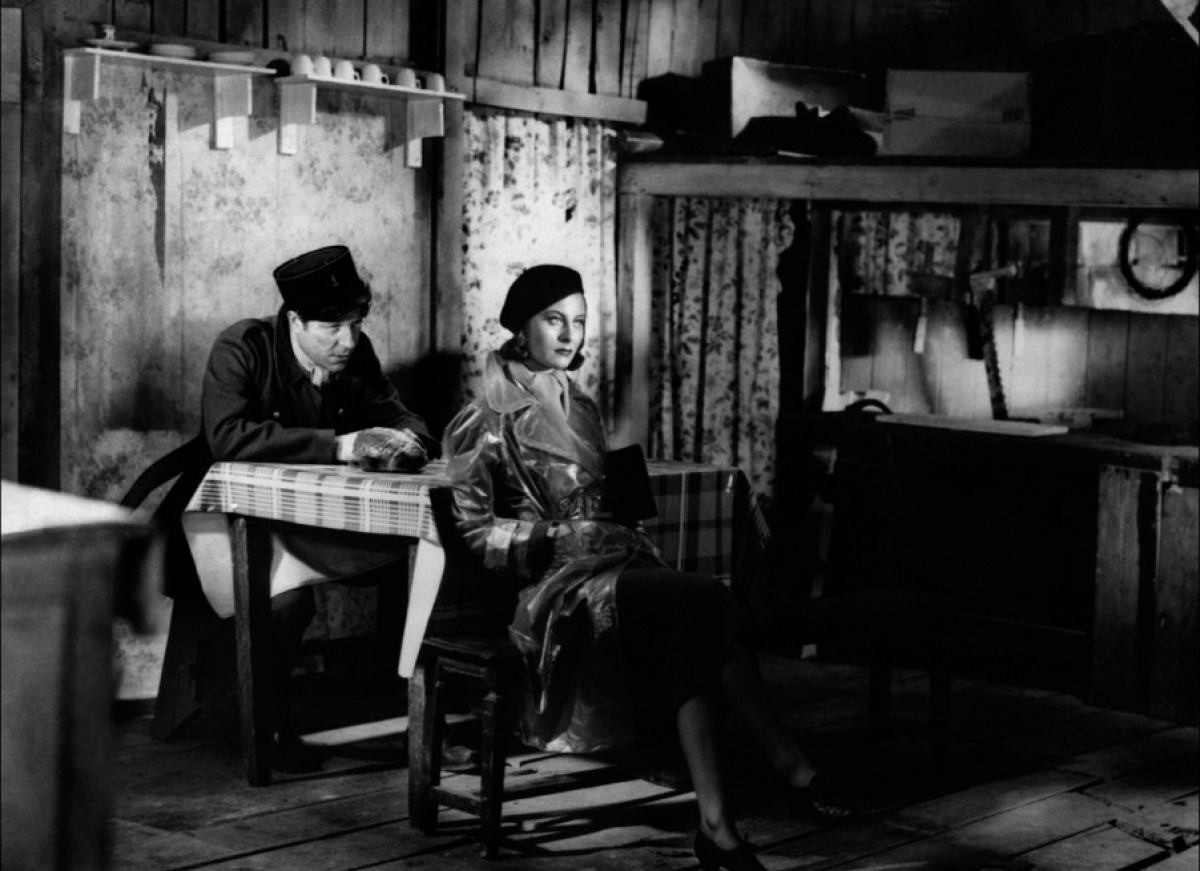
This time directed by Marcel Carné, Jean Gabin gives yet another exciting performance as a deserting soldier named Jean who falls in love with Nelly, a run-away teenager. Their relationship mimics the many forbidden relationships seen in many American noir films, however, this time the circumstances of its prohibition is the fact that Nelly’s godfather is also in love with her and concentrates all his efforts into getting Nelly for himself. Additionally, Jean and Nelly’s relationship is also disturbed by the actions of a local gang and its figures who when looking for Nelly’s former boyfriend stumble into Jean and begin to distaste him.
Port of Shadows as it was titled in English is widely associated with French poetic realism, nevertheless, its praise comes also for its brutal ending and its dark atmosphere as Frank S. Nugent describes in his review for the New York Times in 1939: “The film is nothing more than a lament for the living expressed somberly by a camera greedy for shots of rain and fog, by a writer who has looked at life through grey-tinted glasses, seeing nothing but its drabness, its sordidness and the futility of those who expect anything more of it. (…) Its central figure, the unsmiling embodiment of man’s hopelessness (…)”.
3. La Bête Humaine (1938)
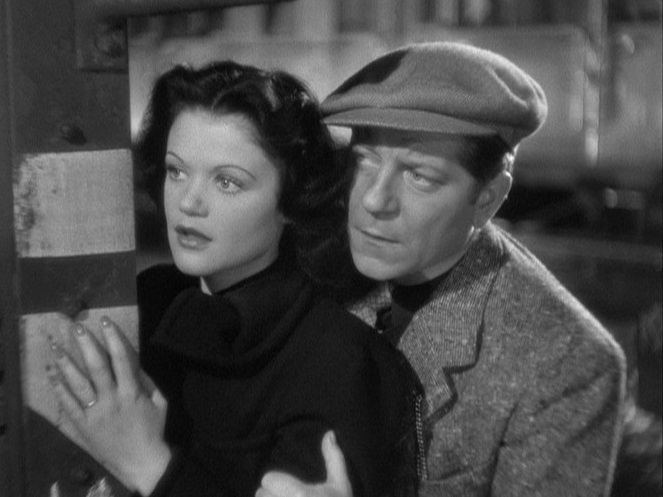
Yet another remarkable performance by Jean Gabin, in this adaptation of Émile Zola’s novel of the same title to the screen by Jean Renoir (and later in an American version by Fritz Lang starring Gloria Grahame and Glenn Ford). It tells the story of a train conductor, troubled by his own murderous desires, who falls in love with a married woman who is equally troubled but for different reasons – she has helped her husband to commit murder.
Once more recurring to the words of New York Times film critic, Frank S. Nugent, who describes the film as “(…) a hardly pretty picture, dealing as it does with a man whose tainted blood subjects him to fits of homicidal mania, with a woman of warped childhood who shares her husband’s guilty secret of murder…It is simply a story; a macabre, grim and oddly-fascinating story.” These last words serve not only as qualifying adjectives of a film but rather of a sub-genre whose centre is the hypocrisy, the sin, the darkness of human nature, that is film noir.
4. Le Jour Se Lève (1939)
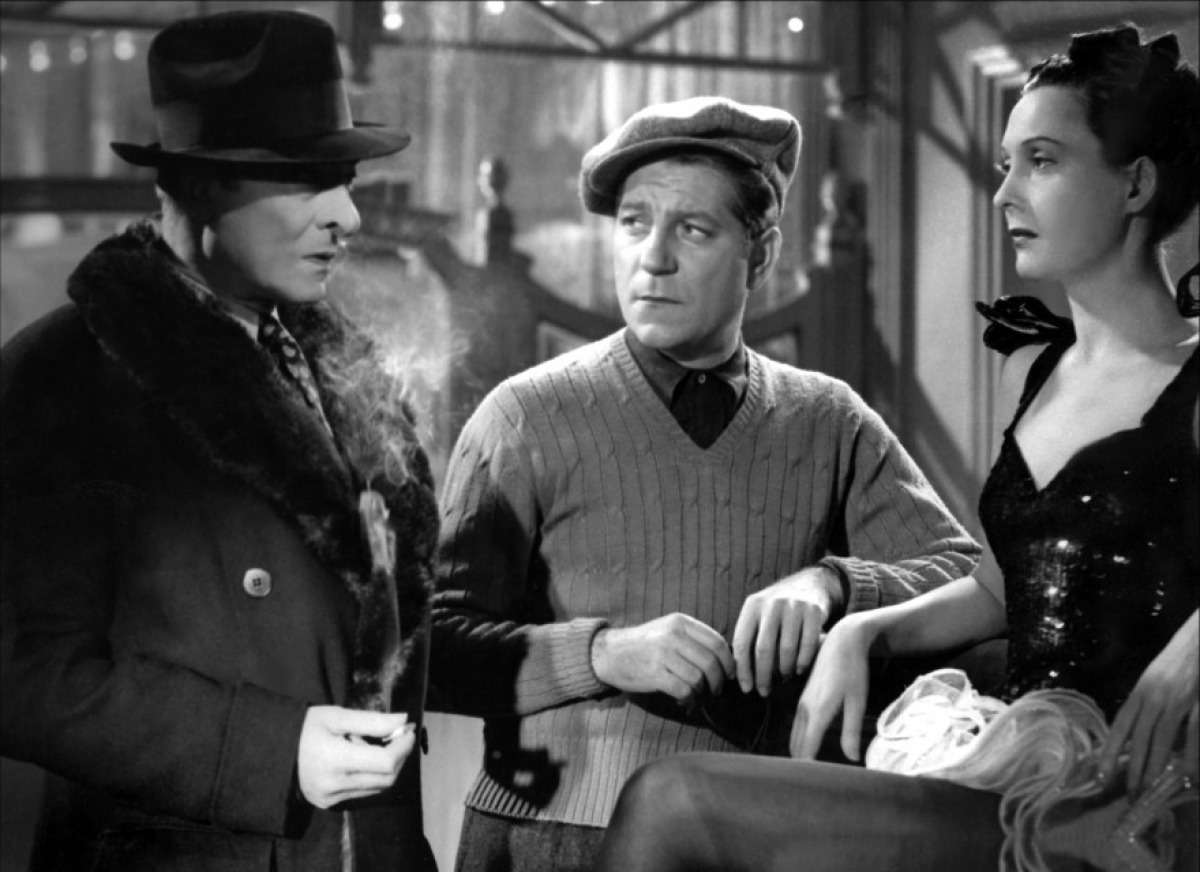
The second collaboration between Marcel Carné and Jean Gabin featured on this list, highly praised by its intelligent use of storytelling is Le Jour Se Lève titled in English as Daybreak, a film that revolves around a worker named François who after murdering a man named Valentin, is trapped in his apartment. With the police waiting outside the building, François begins to recollect the circumstances that led to his present disgraceful situation.
Le Jour Se Lève is yet another example of the French poetic realism, a movement that starred in France during the 1930s which is centres its attentions on figures relegated by society such as working class members, petty criminals or unemployed people who come across an opportunity or someone that is able to change the pessimistic course of their lives. However, these main characters often fail at reaching their goals and, sort of like in the classic theatre, see themselves doomed by a darker faith that usually dictates an endless disillusionment towards life or in some cases its end.
Despite this fact, Le Jour Se Lève is often looked by critics and scholars as an example of noir influence due to its crude depiction of reality, the films connection with the underground and criminal activity, as well as, the use it does of contrast and other chiaroscuro techniques often associated with the American film noir movement.
Occupation Period and Golden Age of French Film Noir
5. 1943’s Le Corbeau and other titles by Henri-George Clouzot
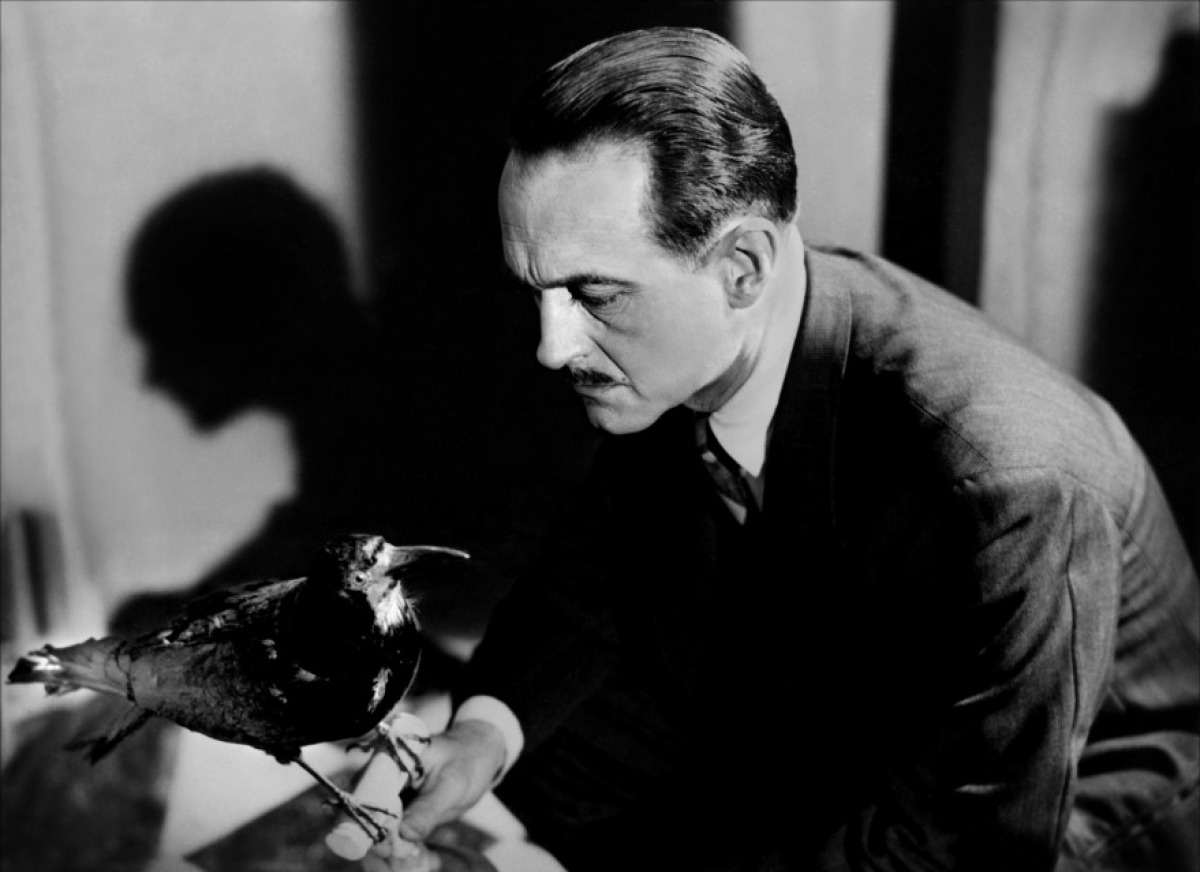
Henri-George Clouzot is one of the names that has to be regarded as one of the key figures of French cinema influenced by the American noir wave. Many of his films share many characteristics with film noir, concentrating their attentions on ‘real’ people that find themselves in special circumstances, often connected, with death, robbery or in the middle of other criminal intended actions.
Le Corbeau, titled in English The Raven, released in 1943, is just the first of many films directed by Clouzot to display an interest with darker atmospheres and ideas such as cynicism, greed, lack of morale, detachment and even disenchantment. In Le Corbeau a village doctor named Rémy finds himself the target of mysterious letters sent around the village accusing him of heavy “moral sins” such as adultery, practicing abortion, spreading lies and so on.
Other interesting titles by the director that display a somewhat noir influence are, chronologically: Quai des Orfèvres (1947), Le Salaire de la Peur (1953) and Les Diaboliques (1955). Particularly popular since the 1950s remained Les Diaboliques and Le Salaire de la Peur.
The first is a tale of two women, the wife and the lover of the same man who plan to murder him. However, after the plan unfolds successfully letting them enjoy a temporary taste of freedom, the two women are confronted with yet a great distress, the disappearance of the victim’s body.
Le Salaire de la Peur, titled in English The Wages of Fear which revolves around the dangerous voyage of four men who risk their safety when transporting a nitro-glycerine shipment across remote south America.
The film gained an international acclaim due to the performances of French star Yves Montand and Véra Clouzot, as well as, due to its explosive great sequences and also due to the maintenance of the thriller aspect throughout the all film. As described by Bosley Crowther in the New York Times: “The characteristics of the people are not the absorbing thing in this film. The excitement derives entirely from the awareness of nitro-glycerine and the gingerly, breathless handling of it. You sit there waiting for the theatre to explode.”
6. Panique (1946)
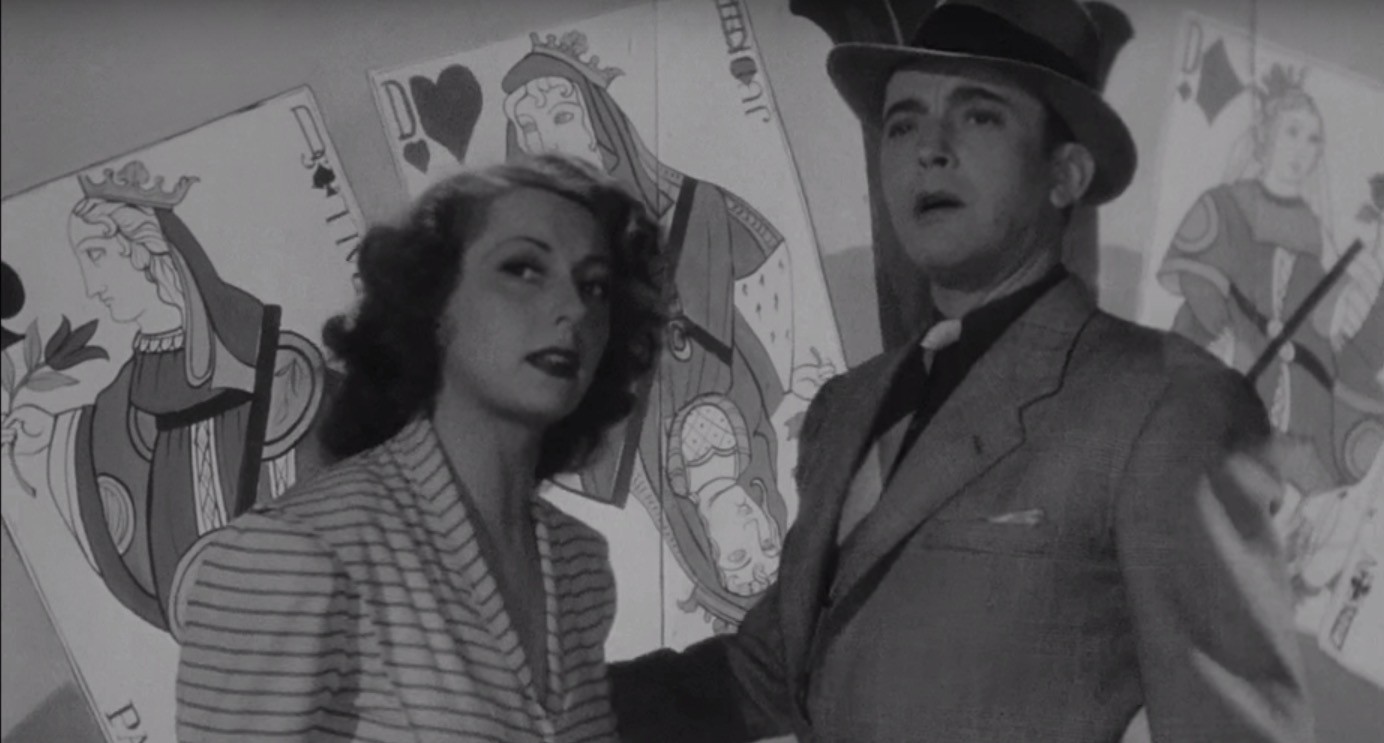
After directing Pépé Le Moko as described previously, director Julien Duvivier returned to the noir atmosphere with 1946’s production of Panique. The film set in the Parisian suburbs revolves around a man known as Monsieur Hire (portrayed by Michel Simon) who becomes suspected of committing a crime, the murder of a maid. Even though he is not guilty the man starts to be hunted by his neighbours and soon a crowd goes on the streets looking for avenging the young maid they think was murdered by a Hire –a Jew.
Despite its undeniably noir influence, being Monsieur Hire a sort of anti-heroic figure (because of his unfitness within the Parisian community he lives in) and an ordinary man that finds himself under extreme circumstances evolving a great degree of violence, the importance of this film derives from yet another important aspect as justified by author Susan Hayward in her book French National Cinema: “After the war narratives were spent on some kind of revenge. The harrying of a Jew to his death in Duvivier’s Panique (…) attest to a need to project the immediate past on to a different set of narratives that are removed from the immediate arena of guilt (although Panique comes uncomfortably close). Dark social realism is to be found in a considerable number of films during the five-year period after the end of the war. The films of Henri-Georges Clouzot and Henri Decoin are the most remarkable in this context in their fierce, almost cynical pessimism, but the works of Yves Allégret and Julien Duvivier in that period come close on their heels.”
On a later stage of his career Duvivier also directed another noir influenced film titled Voici le temps des assassins (1956) which tells the story of Monsieur Chatelin, the owner of a Parisian restaurant, who is reunited with the daughter of his former wife Gabrielle. Moved by the girl’s loneliness and lack of financial comfort, Chatelin employs her and has time passes the two began having an affair which is consummated by marriage. However, unbeknownst to old Chatelin is the girl’s true intentions and character which he starts uncovering soon after their marriage.
7. 1948’s Dédée d’Anvers and other titles by Yves Allégret
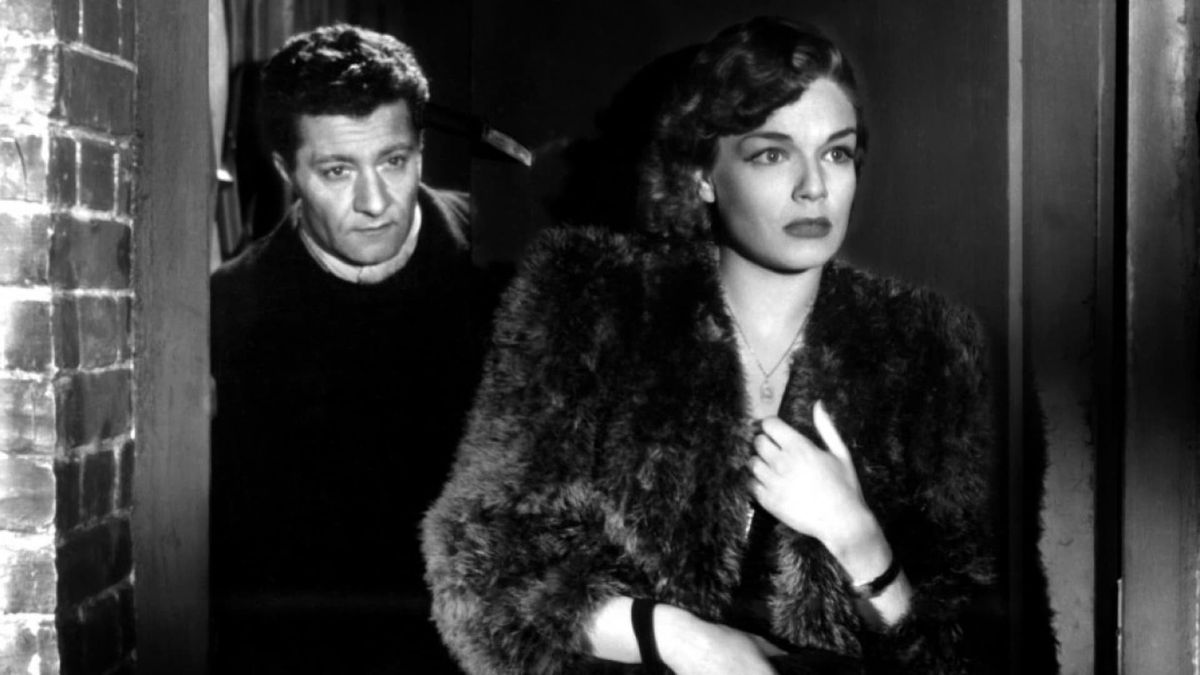
One of the names referred before by author Susan Hayward within the context of post-war French cinema was Yves Allégret. And there is a distinctive trait in Allégret’s cinema which can be described as dark social realism.
After commencing his career with comedy films, Yves Allégret, embraced dark toned pictures often described as noir films starting with 1948’s production of Dédée d’Anvers. This film stars Simone Signoret as Dédée a prostitute working in a harbouring town who meets an Italian sailor named Francesco, whom she sees not only as a love interest but also as a mean to escape from her present condition and her obligations towards her pimp/manager named Marco.
Yves Allégret, who was the former assistant of his brother, famed film director, Marc Allégret, made of his collaborations with scriptwriter Jacques Sigurd, his most remembered films: Dédée d’Anvers, Une si jolie petite plage in 1948 and Manèges in 1950.
8. André Cayette’s tetralogy of Judicial films (1950 – 1955)
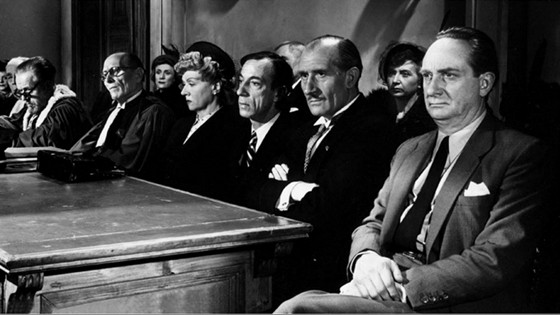
Chronologically ordered: Justice est faite (1950), Nous sommes tous des assassins (1952), Avant le déluge (1954) and Le dossier noir (1955).
André Cayette who once had been a lawyer himself, turned to filmmaking after the war in a studio called Continental Films (which had also been responsible for the production of Le Corbeau), that was under German influence and control. Throughout his career, André Cayette worked around very specific themes such as law and order, justice, morale, guilt and pardon.
These reveal the predisposition of Cayette’s films to put the human figure under an intense observation which is also revealed through the various elements of the mise-en-scène – use of camera, sets, props and so on – as if even out of the courtroom we feel that his characters and their actions are being put under constant evaluation often with the purpose of focusing on the individual’s morale or lack of it. In this context, naturally, his four most important features present storylines and situations that naturally serve as basis to the exploration of Cayatte’s vision and favoured themes.
In Justice est faite, a woman named Elsa is accused of murdering her lover, while on court, her case is discussed vividly by various jury members who put under questioning her previous life experiences, as well as, their own which allows them to see in the presented arguments by defence and prosecution, evidences of very distinctive things.
In 1952’s Nous sommes tous des assassins, the troubled life of René Le Guen is put under focus. Le Guen who had been trained by the French resistance to pursuit and kill Germans and traitors during the war, continues to commit the same crimes in the post-war period. However, once he is caught, his trial begins and so does later his waiting for either the commutation or unfolding of his sentence – death by the guillotine.
Avant le déluge revolves around a gang of teenagers who run away from their parent’s homes in hopes of also leaving the country due to the imminence of a third world war – the atomic war. In Le dossier noir, the mystery revolves around a little black dossier who disappeared from judge Jacques Arnaud’s house which contains information on one of the towns prominent figures and his shady actions.